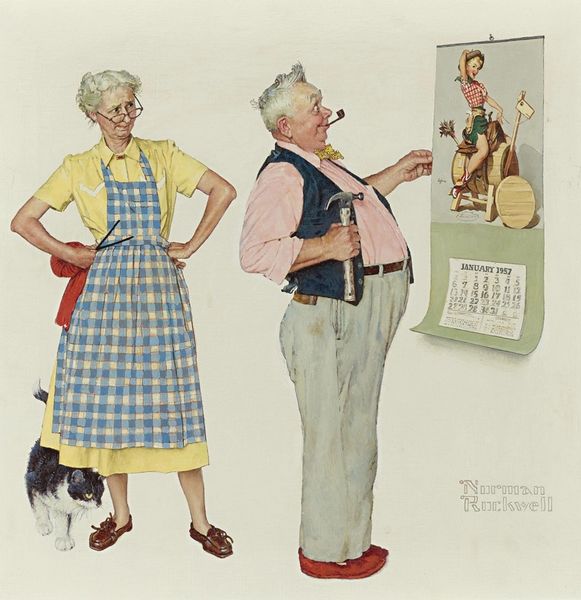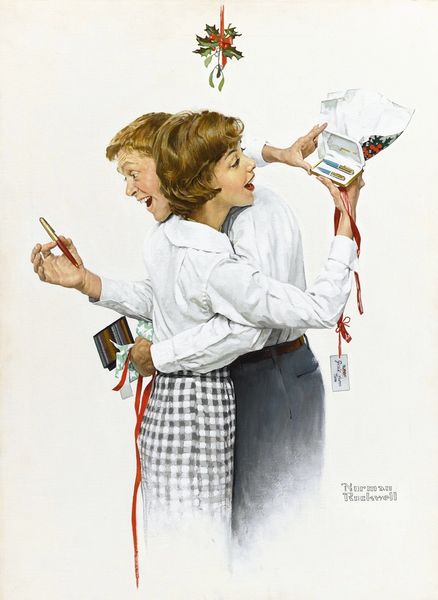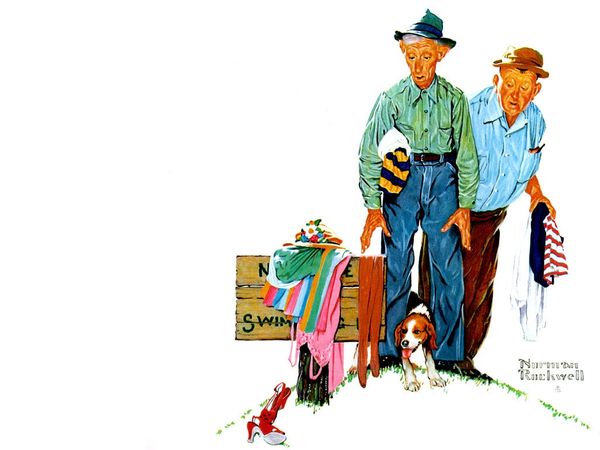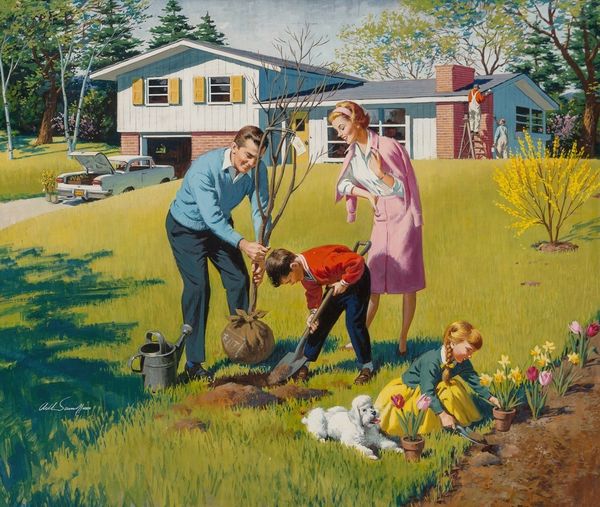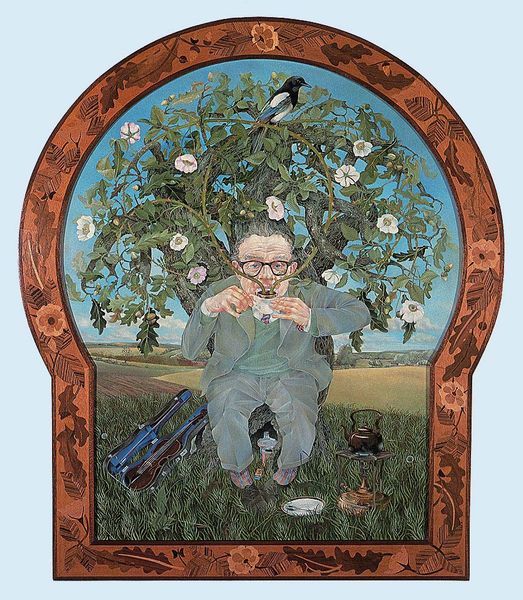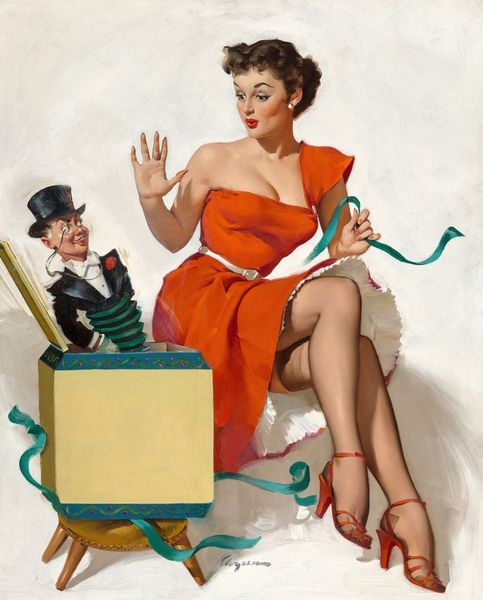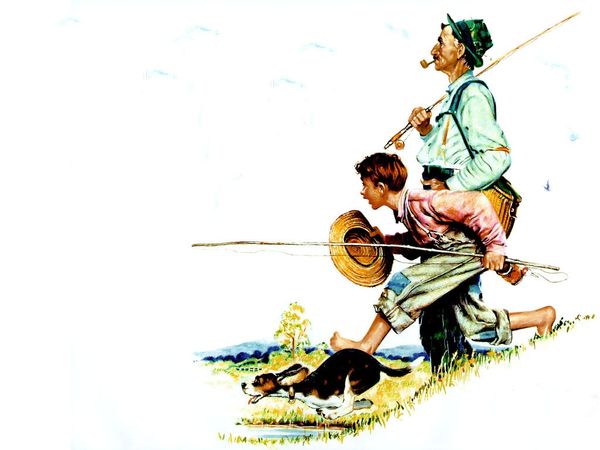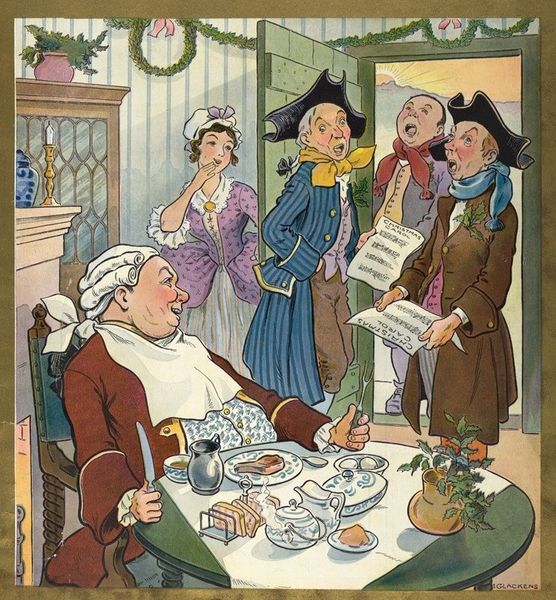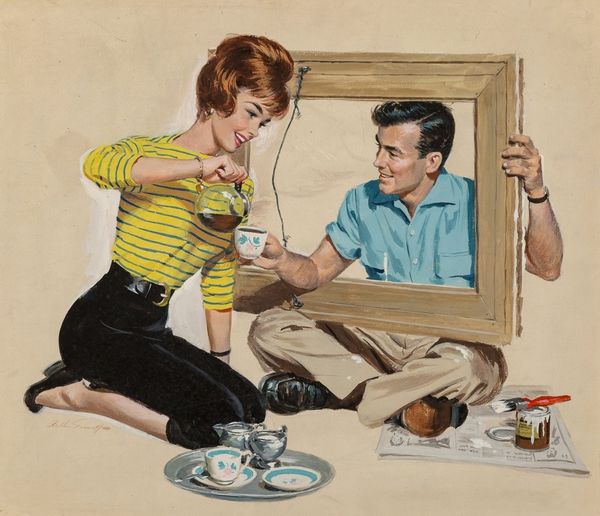
painting, oil-paint
#
portrait
#
painting
#
oil-paint
#
figuration
#
social-realism
#
watercolour illustration
#
genre-painting
#
modernism
#
watercolor
#
realism
Copyright: Modern Artists: Artvee
Editor: We're looking at Norman Rockwell's "Tender Years; Mowing the Lawn" from 1957, done in oil. The first thing that strikes me is the contrast: a vibrant, patterned shirt against the dull ache of exhaustion on the mower's face. How would you interpret this piece from a formal perspective? Curator: Note the careful arrangement of diagonals. The bright red handle of the lawnmower cuts across the composition, drawing the eye from the lower right corner toward the sleeping man. Then look at the curves: the dog's body mimics the man's slump. How do these formal echoes shape our understanding? Editor: So, you're saying the composition itself contributes to the feeling of... tired relaxation? Curator: Precisely. Consider the limited palette – primarily blues, reds, and yellows. They aren’t mixed to dull shades, rather carefully placed with crisp outlines, maintaining tonal clarity and reinforcing the stillness of the scene despite the implied activity of mowing. What does that visual clarity tell you? Editor: Perhaps that even in the midst of labor, there's a sense of order, or a certain pleasantness, achieved through visual harmony? I didn't think about the specific tones much. Curator: Absolutely. And the almost square canvas gives us a confined sense of depth that makes the scene feel quite flat. The man dominates much of the canvas while the woman remains in the background – she could merely be an image superimposed onto an add, like an angel bringing water of life to save someone near to passing! Do you notice other structural elements in the formal organization? Editor: I see your point now about how he doesn’t delve into depth and scale. Even with the woman bringing refreshments behind the mower, her relationship is still as a backdrop. Looking closely at the forms he makes—they become far more suggestive, telling us about shape instead of context! Thank you. Curator: You’ve understood my own lesson also! I appreciate how this reading highlights structure over sentiment, altering one’s perspective, through careful and sustained attention to formal element in artwork.
Comments
No comments
Be the first to comment and join the conversation on the ultimate creative platform.
